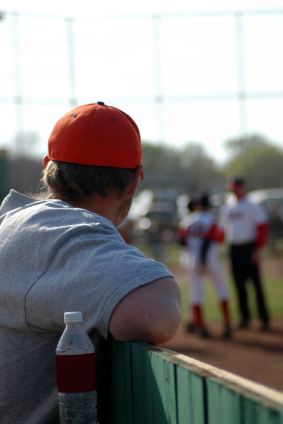By Celia Brackenridge
In the early 1990's a tidal wave of shock hit the world of sports in the United Kingdom in the wake of the arrest and subsequent conviction of a former British Olympic swimming coach, Paul Hickson, on charges that he had raped two teenage swimmers and indecently assaulted others.
 At the time of the Hickson case, David Sparkes, the Chief Executive Officer of the Amateur Swimming Association, said in a radio interview that the HIckson case was "a one-off" - in other words it doesn't (really) happen here. We call this denial.
At the time of the Hickson case, David Sparkes, the Chief Executive Officer of the Amateur Swimming Association, said in a radio interview that the HIckson case was "a one-off" - in other words it doesn't (really) happen here. We call this denial.
But David knew, as I and many others did, that his sport had been dealing with allegations of maltreatment for many years. Worth remembering then, that - like mice in your kitchen - there's never only one.
Denial is, thankfully, rare in sport these days. But back then, we lacked an evidence base by which to judge our own knowledge or lack of it, on the subject of abuse in sports.
Catch 22
We faced a Catch 22. It was difficult to get sport to provide any data on this subject, and difficult to persuade the child protection agencies that there was a problem in sport. I could not get permission to do a survey across sports, but could not persuade the government to do anything without such data.
But now, thanks to some systematic quantitative and qualitative research, and help from some brave National Governing Bodies of Sport (NGBs), we have a growing body of evidence on which to base our safeguarding policies and procedures and our all-round approach to athlete welfare.
Research has helped us to understand two basic elements of the issues: first, the behaviour of abuse perpetrators and the consequences of abuse for victims2,3; and secondly, the extent and impact of safeguarding policies in sport.4,5
Here's a list of some of the common myths that we have encountered during our 20 year expedition through the foothills to the peaks of safeguarding. I will try to show how research findings can help to challenge these myths and provide support for you in implementing a Call to Action.
MYTH 1: "Sport is a safe space for young people"
Is sport better or worse than other sectors of society when it comes to child abuse?
Why are some people still surprised by child abuse in sport? We should be surprised if child abuse did not happen in sport. Sport is just one part of our social system, suffering all the good, bad and ugly features of other sectors, including child abuse.
But, there is some good news. We already know that teenage female athletes start being sexually active later than their non-athlete counterparts.6 There is now some limited evidence that sport can help to build resilience against sexual exploitation7 and against delinquent behaviours more generally.8 Thus, to this extent, we should be happy to see that being active in sport helps tackle more than just the obesity crisis.
It also seems from some data that female athletes suffer more harassment outside than inside sport.9 Yet they experience more harassment from their coaches than pupils or workers experience from teachers or bosses. This is explained by the authoritarian hierarchies in sport - with coaches all-powerful and athletes often lacking a chance to express their own opinions or to challenge sport authority figures.10, 11
MYTH 2: "It doesn't happen in our sport"
Are some sports immune from the need for safeguarding?
Abuse happens in all sports.12 We think that early-specialization sports (e.g. gymnastics, figure skating) may present greater risks of sexual exploitation, especially those who for whom intensive talent ID happens just before or around puberty.13 However, this hypothesis is only weakly supported by empirical data, since we have access to so few well-archived and detailed cases. We do not yet know whether there is any relationship between other types of abuse and early/late specialization sports.
MYTH 3: "Child protection is just for kids"
Is safeguarding really necessary at the elite level?
It is not uncommon for top coaches to complain about the intrusion of safeguarding into their work, saying that "it gets in the way of performance"14 Wrong! The complete opposite has been found, in studies across several countries. Survey data from Australia,15 the Czech Republic,16 Norway,17 and Belgium 18
show that the higher an athlete progresses up the sporting talent ladder, the greater the risks of being exploited sexually. The latest survey data show that the same applies to emotional abuse of young athletes.19, 20, 21So, far from needing less safeguarding at top level, we actually need just as much there as lower down the talent ladder.
The happy athlete is more likely to achieve than the harassed or abused one: safeguarding athlete development and pushing for achievement are not opposing concepts but are two sides of the same performance coin. If our elite coaches understood this - and were prepared to embrace safeguarding as an essential part of their own preparation - there would probably be far less misery, fewer drop outs and fewer long-term negative consequences among elite athletes. So far, we have only a few research studies on this, plus quite a lot of anecdotal/biographical evidence.22, 23, 24
MYTH 4: "Scanty clothes lead to more abuse"
Does less clothing cover lead to more sexual exploitation?
No: a large survey in Norway found more harassment of female athletes in sports with greater clothing cover.25 This may be due to them being seen as playing more "masculine" sports, and thus provoking homophobic and sexually harassing reactions. It's also possible that scanty clothing is associated with early specialization sports - in other words that peaking age is the important mediator rather than clothing as such.








